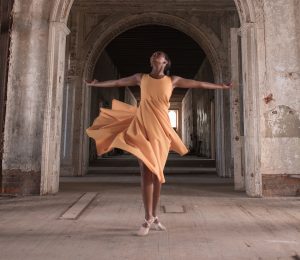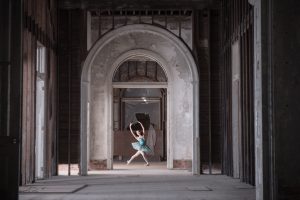 From the September 2020 Desktop News | Collaboration, research, and performance are instrumental aspects of theatre and dance, making the challenges of COVID-19 all the more difficult for UA’s Department of Theatre and Dance. But as they say in show business, the show must go on, and the department is adapting—namely through a virtual 2020-2021 season in lieu of live performances.
From the September 2020 Desktop News | Collaboration, research, and performance are instrumental aspects of theatre and dance, making the challenges of COVID-19 all the more difficult for UA’s Department of Theatre and Dance. But as they say in show business, the show must go on, and the department is adapting—namely through a virtual 2020-2021 season in lieu of live performances.
The process and performances will look quite different. Students will audition through recordings, and all rehearsals will be virtual. The department would normally have 13 shows in a standard season. This year, that number is nine.
Dance will produce five concerts, all of which will be virtual. Theatre plans to work through four shows, but they will not be full productions. Different teams, such as actors, designers and technicians, will still collaborate and complete their tasks, but the department will share videos highlighting the process rather than a fully-realized final product. The new format allows students to focus on their individual crafts while sharing insights into the creative process with audiences.
The methods are different, but department chair Sarah Barry thinks it has underlying positives. As audiences will see the process, Barry hopes it will help them better appreciate the research, collaboration and work that goes into their productions.
“This could lead to additional connections with communities we’ve never reached before, which could serve as an excellent recruiting tool, build deeper communal appreciation of the arts, and serve as a pathway to support underserved communities with artistic programming,” Barry said.
Not only could this new format increase accessibility to the arts, it will enable more work with technology and film, preparing students for things they might encounter professionally once they leave UA.
“As artists, we believe limitations are often a springboard for creative solutions,” Barry said. “We are confident we can still offer an exceptional learning and creative process for our students as well as insights into this process for audiences to enjoy.”
Most classes in the department have maintained an in-person element. The department has been able to make 92 percent of its classes either fully face-to-face or hybrid. The remaining eight percent are being administered in a synchronous online format.
 “Every student will receive the same amount of instruction regardless of method,” Barry said. “The faculty are working diligently to deliver content in a variety of methods while still upholding the main learning outcomes and purposes of each course.”
“Every student will receive the same amount of instruction regardless of method,” Barry said. “The faculty are working diligently to deliver content in a variety of methods while still upholding the main learning outcomes and purposes of each course.”
The department is following CDC and UA guidelines, and they have also been following the research of national and international theatre and dance organizations. They are implementing numerous practices, such as traffic patterns in their buildings, cleaning protocols, eliminating activities that require contact with other students or shared equipment, and marking blocks in studios for social distancing.
By following these protocols, the department aims to allow students to continue their training, reach people with their art, and continue to stay safe.
You can help the Department of Theatre and Dance off-set the costs of having a virtual season—and make up for reduced revenue from ticket sales—by giving during Bama Blitz. Learn more and support the Department of Theatre and Dance through the Bama Blitz giving portal.